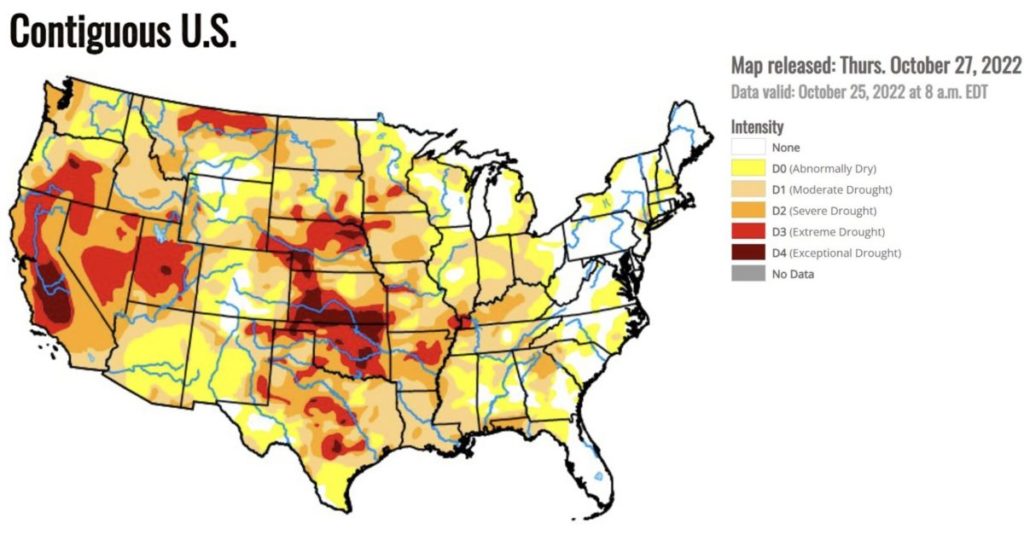
The nation is currently experiencing one of the most expansive droughts ever recorded, with more than 80% of the continental U.S. considered abnormally dry.
Almost all of Tennessee is dry, and Nashville is in severe drought, according to the latest U.S. Drought Monitor.
 Caroline Eggers WPLN News
Caroline Eggers WPLN NewsThe drought dried up vegetation and caused early leaf litter this fall in Nashville.
The consequences have popped up in diverse ways, from wildfires and record-low creek levels to dull fall foliage and hikers spotting nocturnal creatures out in daylight.
The drought is also affecting underground infrastructure: Metro Water Services repaired 66 water lines in October, up from 28 the year before, due to ground movement.
“When you have a water main underground, and then the soil and ground around it is shifting, it can break,” said Sonia Allman, a MWS spokesperson. She emphasized that people should report any sightings of water breaks, such as water flowing up from the ground, right away to the agency.
Nashville has expansive soils, meaning the soils contain water-absorbing minerals that can expand during heavy precipitation and shrink during drought. Clay is usually the culprit, and Nashville has soils rich in clay, limestone and alluvium.
This shrinkage is moving the soils enough to impact the city’s normally stationary water infrastructure — even the newer pipes.
“It’s not only old pipes,” Allman said, explaining that aging infrastructure is a common cause of line breaks. “It can be a pipe that was installed two years ago that’s in great condition, and when that ground shifts, it breaks.”
It is usually hard to determine the exact cause of a water line break, but Allman said the evidence is clear that the drought is leading to ground movement.
Climate-fueled droughts are unearthing new risks in Tennessee
Warmer climates are making droughts more frequent, longer and more severe in the U.S. In the Southeast, climate change is intensifying the hydrologic cycle, increasing the severity of both heavy rainfall and drought.
Many drought impacts have been well documented, like wildfire risks, air pollution, agricultural losses and altered ecosystems. There has been less research on city infrastructure impacts in Tennessee.
From a state and federal perspective, the drought conversation is often focused on agriculture, since it represents the largest potential economic loss, according to state climatologist Andrew Joyner.
And, unlike the obvious effects of floods, droughts can be overlooked by the average person — especially during the fall when the vegetation is browning.
“It’s hard this time of year to get people to pay attention to drought, even when you’re in a drought,” Joyner said.
The drought is expected to continue for the near future. If the state doesn’t receive enough recharge this winter, greater impacts are expected this spring.

